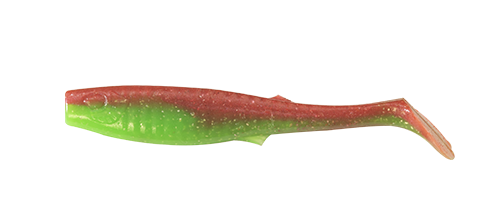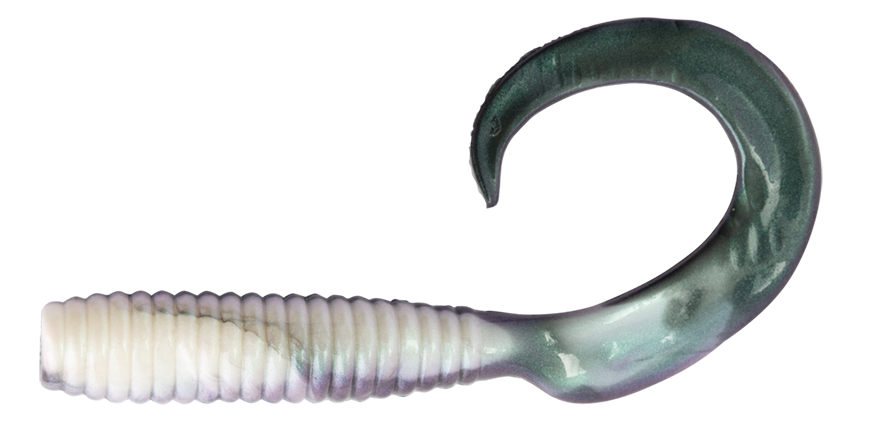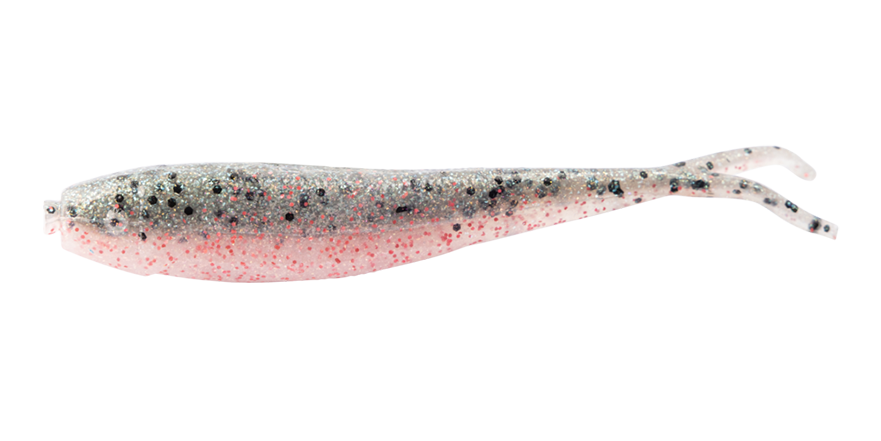RAINBOW TROUT
A hard fighting freshwater fish that can be found over most of the country, the rainbow trout is a keen lure taker and is regularly caught on a well-presented bait or fly.
Its native territory is the USA and more specifically, California where it would live in the ocean after being spawned in the upper reaches of a river system (it is also known as a steelhead).
These fish are found in lakes and rivers and prefer cold, well-oxygenated water and are a dominating species in these areas.
Generally fast swimming, this fish can chase down any other small fish and therefore is an excellent lure target.
Casting a lure will catch trout with a preference to soft baits and hard bodies. The basic and best bait fishing rig is a running sinker, and there are many baits that a trout will readily eat including – worms, grubs, cicadas, PowerBait Trout Nuggets etc.
- Size: 200g – 4kg
- Distribution: North and South Islands.
- Hotspots: Freshwater lakes, rivers, streams and canals.
- Fishing type: Small to medium hard and soft body lures. Fresh baits such as worms and grubs.
BROWN TROUT
The most prevalent trout species, brown trout are found in the greatest range of conditions and environments, from saltwater estuaries to alpine streams.
Often found alone in the margins of lakes and backwaters of rivers systems, brown trout are opportunistic feeders and will eat almost any well-presented lure or bait.
An apex predator in their environment, brown trout have keen eyesight and are quite agile, so casting lures is always a good idea.
These trout will actively feed in the morning and late in the afternoon, and these two times of day are prime – pay attention to these times.
For the lure caster, use lures that are 4-cm to 7-cm in length and colours from black to pink and every shade in-between!
The bait selection is also quite variable with worms, grubs and Gulp! or Powerbait Trout Dough taking out top honours.
- Size: 200g – 4kg
- Distribution: North and South Islands
- Hotspots: Freshwater lakes, rivers, streams and canals.
- Fishing type: Small to medium hard and soft body lures. Fresh baits such as worms and grubs.
chinook salmon
There are two distinct variations of this fish species in New Zealand although they are the precisely the same fish – one that has access to the sea and lives the majority of its life there, and ones that are landlocked by a dam wall and can’t escape.
Landlocked salmon are typically smaller than their saltwater cousins because of the food source; however, they still like to be in a school. This schooling mentality can make it easy to catch quite a few in one session.
Trolling from a boat and casting from the shore in a lake is best and as it nears December/January/February, the fish will move to river mouths. From here they’ll run up the river to spawn. This spawning event can be quite irregular in timing and be as late as June.
The saltwater versions of this fish are more like clockwork as they are free to regulate their lives with typical seasonal systems. Entering rivers from the sea around December and making their way upstream to spawn in March.
Living in the saltwater allows these fish to eat more extensive food sources and therefore, become larger fish on average. Surf fishing gear is standard as is snapper spinning tackle. These fish can be as big as 15kg and are commonly 6 to 8kg.
Casting heavy metal lures like spoons and also soft baits rigged on heavy jigheads will catch fish.
Spinning for sea-run salmon is somewhat of a tradition for the south-east, South Islanders and you can find them lining the bank in search of the power sports fish.
There are usually plenty of casts between fish, but the results will speak for themselves when you get to the table!
- Size: 300g – 10kg
- Distribution: South Island
- Hotspots: Freshwater lakes, coastal rivers and beaches.
- Fishing type: Small to medium hard and soft body lures.
CATCH MORE FISH
Be the first to hear our hottest fishing tips, latest tackle releases and offers. Join the Berkley family now.





























